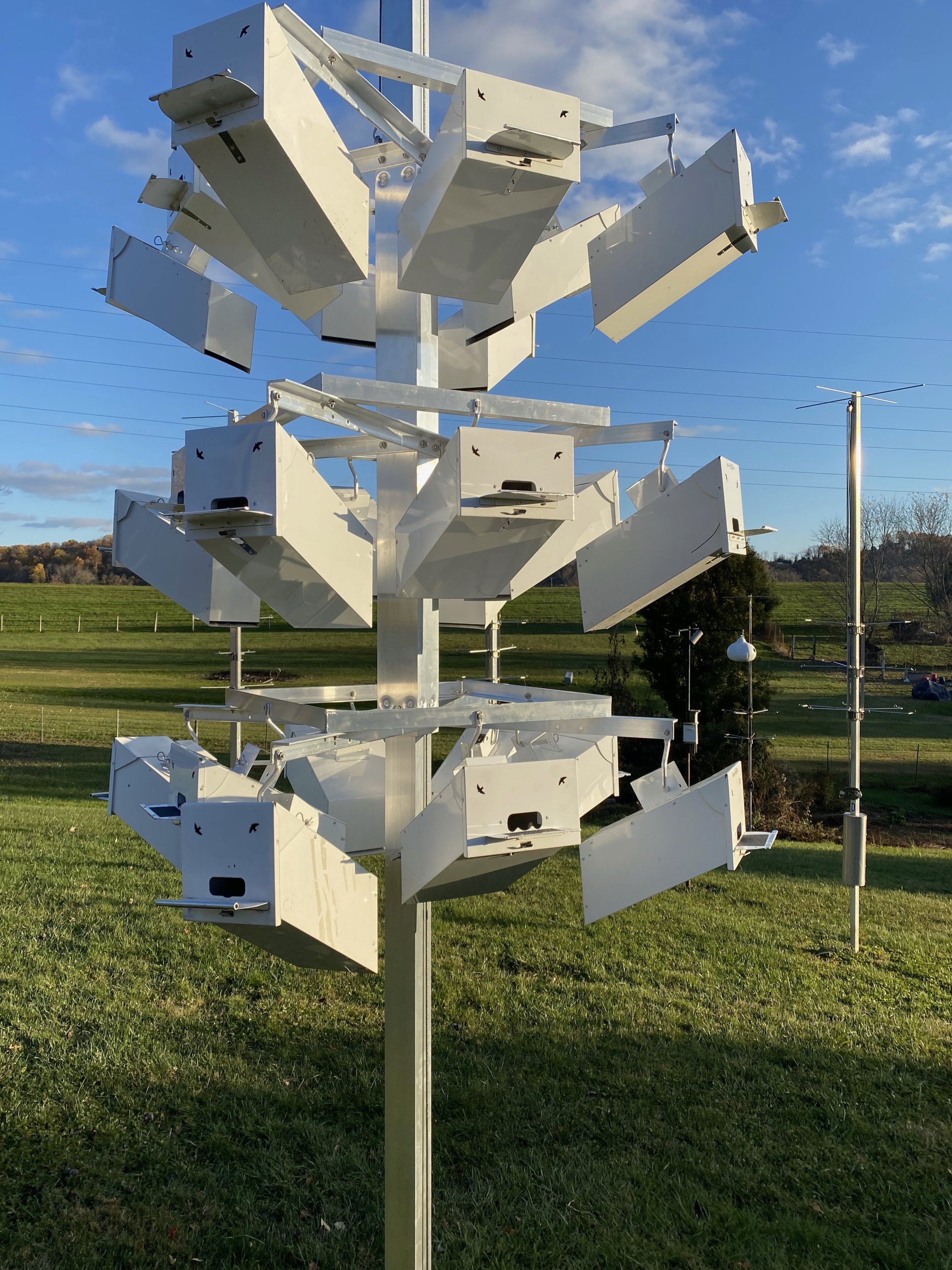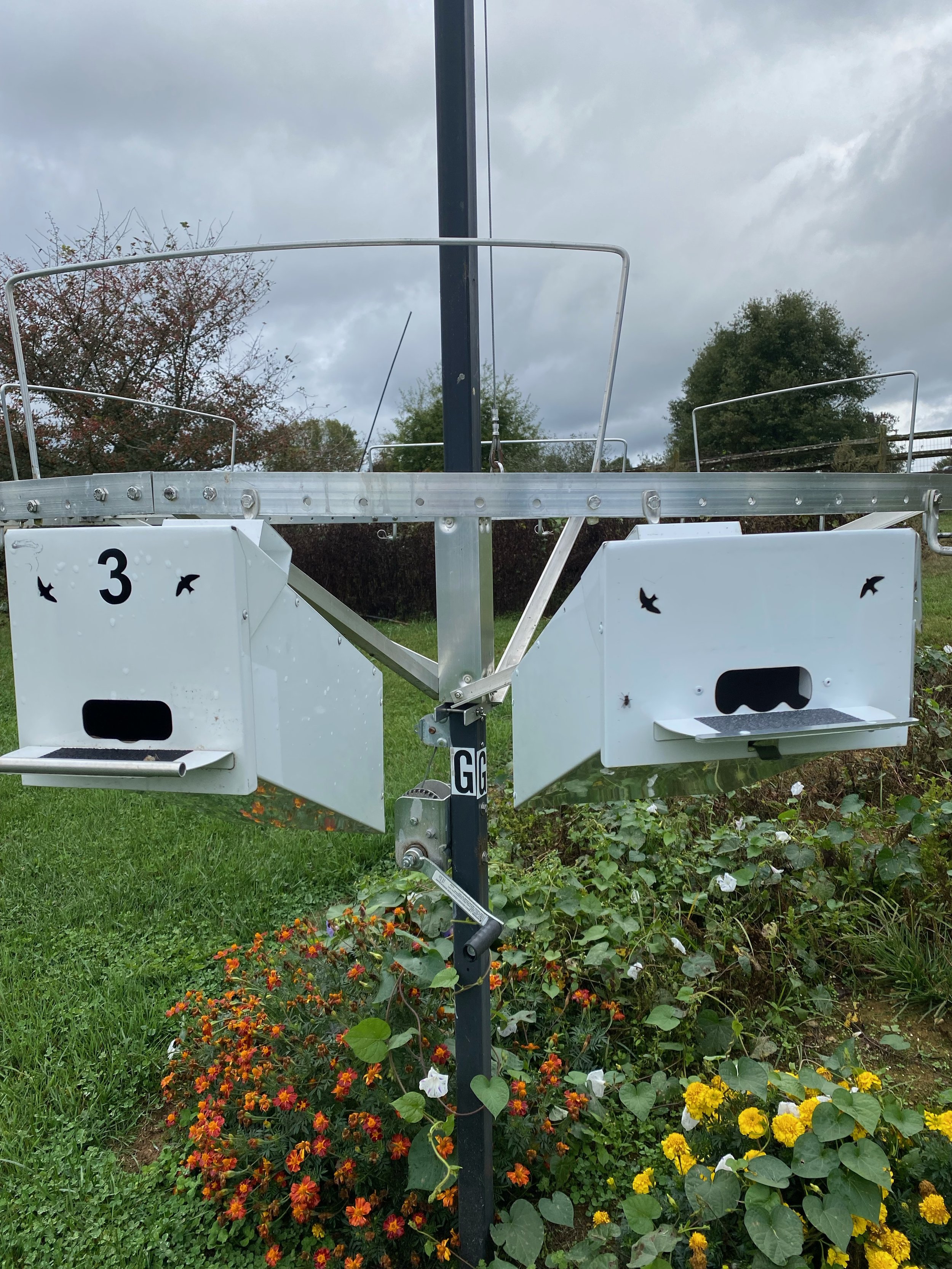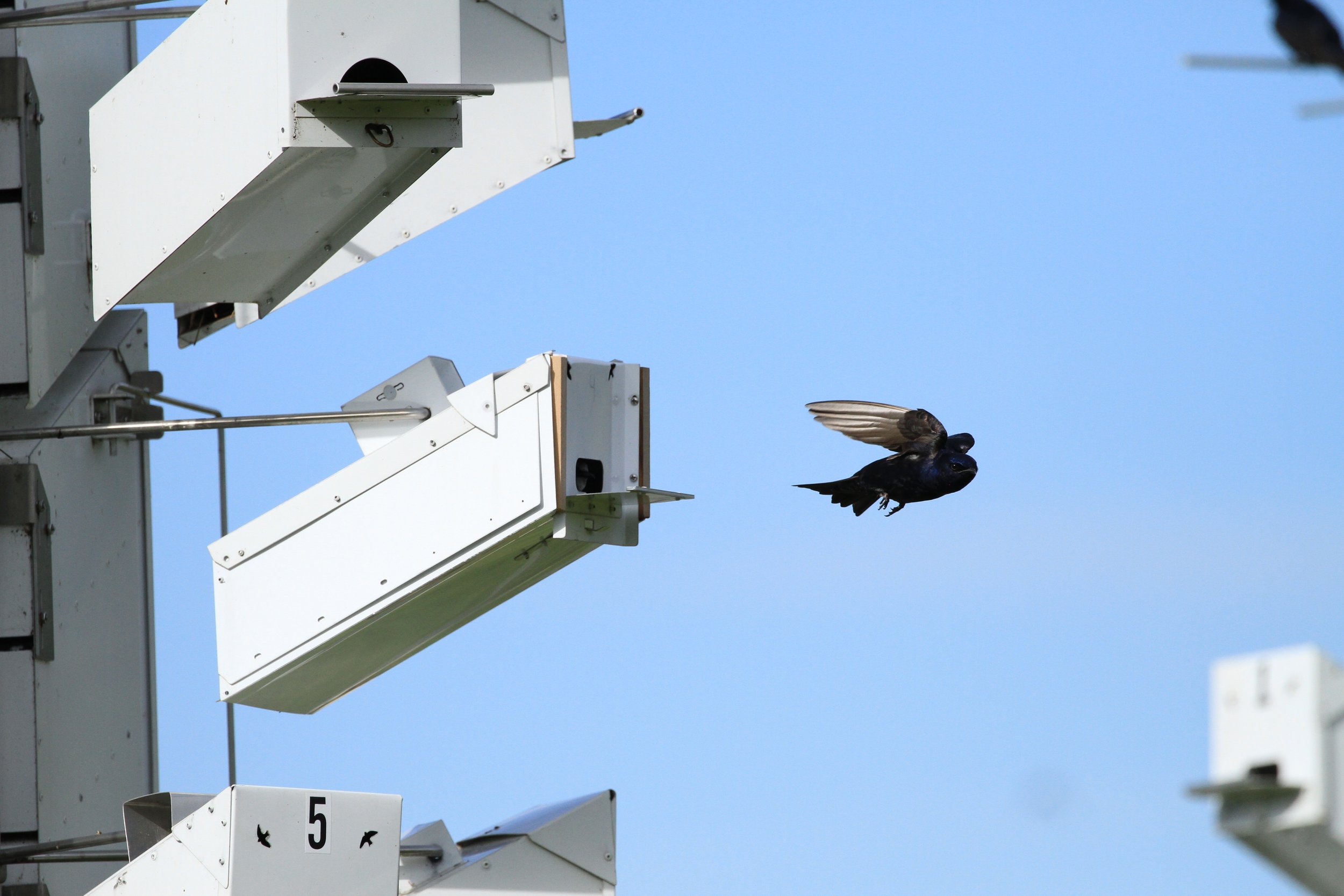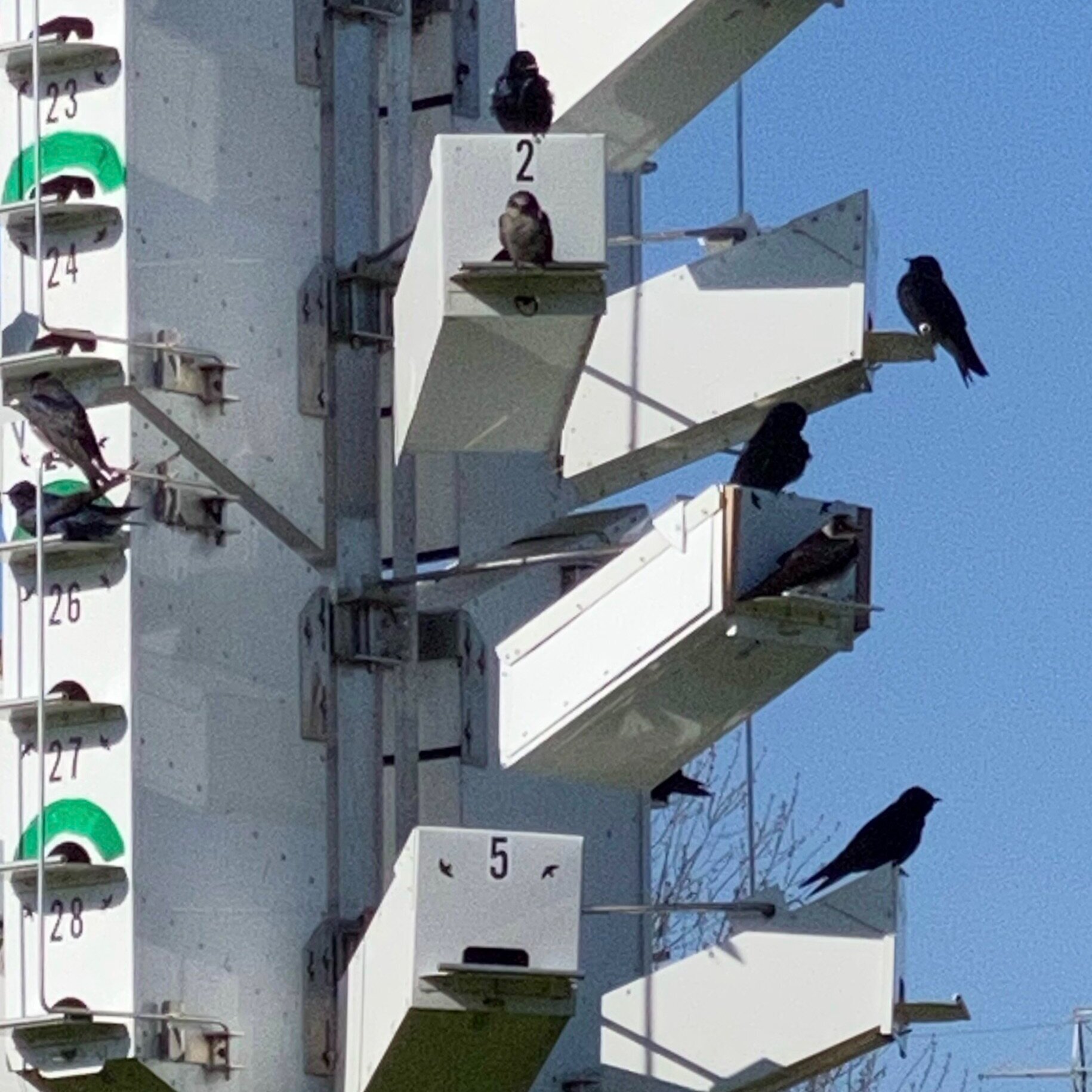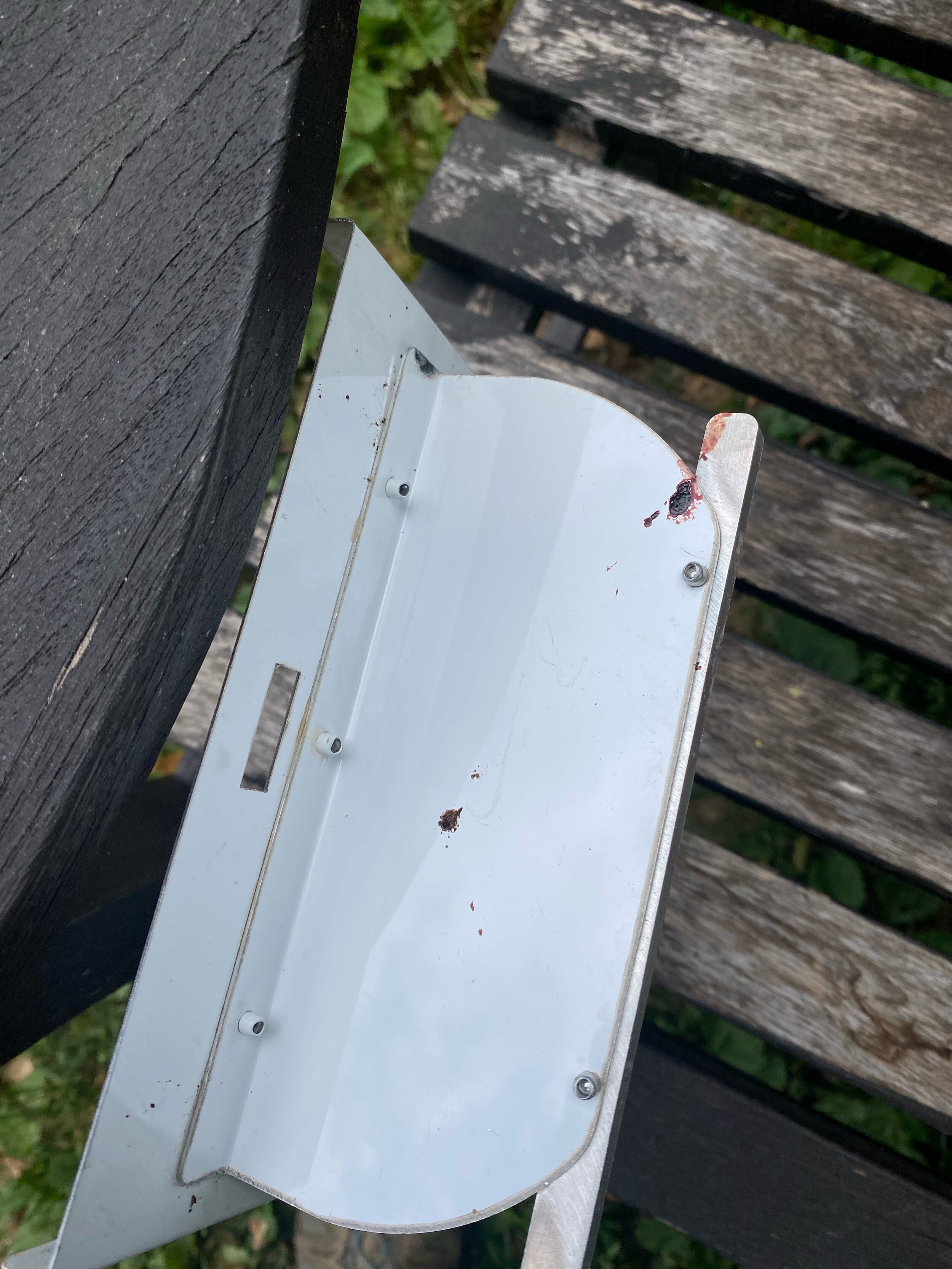Each purple martin season, I attempt to experiment in some way. Last season I had the idea to make a low profile chirpyNest house. The thinking is to question the size of housing in regard to height of cavity. In making a prototype of a low profile house, I also made the low profile ChirpyNest wider. In 2021, the prototype was a success in that it fledged A large brood of five young by an adult pair of martins. This pair settled in at the end of April.
This year I am continuing my experiment by offering a pole of low profile houses. The ideal is to look for a preference by the martins. The low Profile House is 9 inches wide and 5 inches high with the new starling resistant entry.
A bit of background that makes this an interesting experiment on my part is that the location of this new pole is actually where my Castle house has been for the past 20 some years. My castle house, a 24 room modified to 12 room double size cavities, has had very limited nesting pair over the past 5 to 8 years so I’m tired of having it there without productivity while at the same time the three ChirpyNest that hang off the bottom of my castle house have always been occupied by at least two pair and some years three pair.
By changing the castle house and putting up a modified Troyer super system 36 rack, this new rack will hold 24 ChirpyNest. I will be offering six regular ChirpyNest houses , six regular ChirpyNest houses with a false ceiling and 12 of the new low profile wide ChirpyNest houses.
My modified Troyer super system 36 rack with 12 low profile, 6 low profile modified ChirpyNest and 6 regular ChirpyNest.
By doing it this way and offering the variety of three different cavities I’ll be able to at least see if there’s some sort of preference amongst the styles based on which units are claimed first and total number of cavities occupied.
A modified Chirpynest with false ceiling creating a low profile interior.
Over a short term it may be difficult to make any conclusions as to whether a low profile house has benefits over the regular ChirpyNest, but being a cavity nesting bird maybe martins will feel more secure in a less spacious cavity with regards to height. I think it’s proven that they benefit from a roomier cavity floor. All ChirpyNest offer this spacious cavity floor.
I have verified the advantages of the ChirpyNest with regards to cavity environment, and I have grown my colony to its largest size ever with 103 active nests and 89 successful nests to fledge young in 2021, I am anxious to experiment with this low profile house.
ChirpyNest on the left / Low profile ChirpyNest on right
I started the development of ChirpyNest in 2015 in response to devastating owl predation at my Site. In 2016 I offered the first ChirpyNest houses. These first houses were 4 cavity units and I was able to confirm that martins will use the ChirpyNest system. In 2017 and 18 I developed the single cavity ChirpyNest and began offering them to other landlords. In 2019 I eliminated all plastic gourds at my site in order to reduce my pre-mature fledges and jumpers and to commit fully to ChirpyNest. I now seldom have a fledgling on the ground where in the past it was an annual event to spend a couple of weeks picking young off the ground and trying to figure where it came from. The owls, while still making visits, are not causing nest abandonment or preventing my colony from growing.
I could leave well enough alone, but I can’t help but wonder if there are other improvements that might benefit my martins and the low profile ChirpyNest house is a fun project to advance this quest.
For 2022 I made 200 of these low profile houses. I am erecting 12 at my site and have already sent 20 to other landlords that wanted to try them. At this time I am not offering them on my website but if you are interested, email me and I can sell them through emailing. The houses are $45 each plus shipping. These houses also include the improved starling resistant entry similar to the modified excluder and are made from a slightly thicker aluminum (.04 vs .034 thickness). This change in material thickness was due to supply issues with the .034 material. Email tom@chirpynests.com Let me know how many you would be interested in along with your address. I will calculate shipping and send a PayPal invoice.
As martins are arriving in Florida, excitement for the 2022 season is growing every day. Its time to get ready. For 2022 I am offering a total of 140 ChirpyNest houses along with ten T-14 cavities.
My prototype low profile house and the ASY male parent of five new martins that took to the skies from this house in 2021.





















